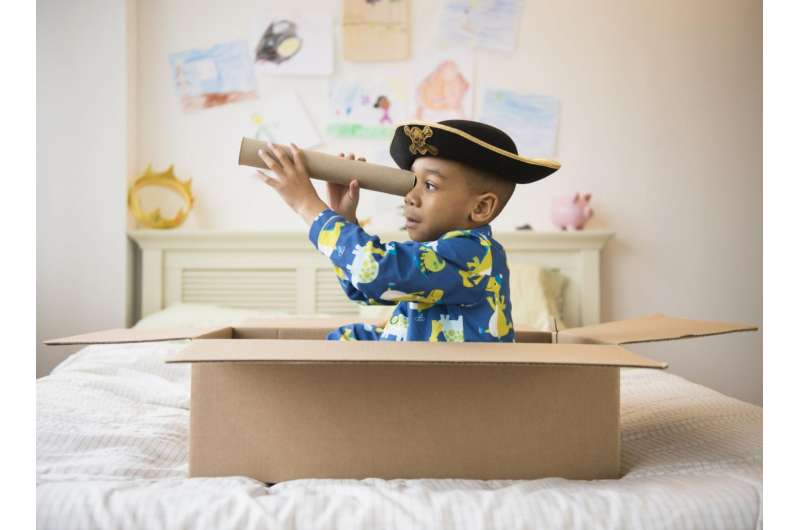Cheap, fun ways kids can learn through play this holiday break

Children learn best through play, but they don't need expensive toys to do so.
With winter break fast approaching, parents can make the most out of the time home with their kids using a few household items and some creativity.
Florida International University early childhood education professor Charles Bleiker says parents can create three fun and simple games to help preschoolers learn math using tennis balls or water bottles.
Parents can also create toys and activities that promote spatial thinking—how we make sense of space, shapes, sizes and recreate patterns. Spatial thinking is an important predictor of future success in math and science.
FIU psychology Ph.D. candidate Carla Abad provides a few tips anyone can use to make learning fun over the holidays.
- Build. Research shows playing with puzzles and blocks helps children develop spatial language and math skills. There are lots of brand-name wooden or plastic blocks and puzzles to choose from, but you can also create blocks and puzzles at home using just paper, scissors and tape. Take a photo or drawing and cut it into pieces for your child to put together. There are also online guides you can print to create 3-D figures including cubes, cones, and cylinders. Your child can even paint or draw on the paper to create different designs and then use the 3-D figures to build all sorts of exciting structures.
- Map it out. Maps are great tools that encourage children to use and develop their spatial thinking. Maps require children to physically and mentally represent a space. You can hide different objects or prizes around your home or backyard and draw a map to find the hidden objects. Older children can draw their own treasure maps after hiding objects in the home.
- Talk (a lot)! Parents who talk more to their kids help develop their early literacy skills. Using spatial language or words that describe dimensions, features, properties, locations, directions and orientation of objects—square, big, flat, under and upside-down—improves young children's spatial thinking skills. For example, ask your child to put away their toys by using a phrase like: "Put that truck on the top shelf between the doll and the large blocks." This is more effective than simply telling a child to put the truck away. Take every opportunity you can to highlight a spatial location (top), a spatial relation between two objects (between) and dimension (large).
- Get creative. With a little imagination, your child can use a lot of things you already have at home to play and learn. They can use boxes, particularly bigger boxes, for many adventures. They can be painted and colored to create all sorts of fun setups like a house, ship or bus, where children can spend countless hours playing. This type of play can help develop their creativity and when paired with pretend play—imagining they are a pirate or bus driver—can advance social and language development.
Abad is a National Science Foundation Fellow and under the guidance of FIU psychology professor and spatial language expert Shannon M. Pruden, she studies the factors that may contribute to the under-representation of women and minorities in STEM careers. Specifically, Abad is looking at the role of early educators on the development of children's spatial capabilities to see if gender stereotypes begin before children enter formal schooling.




















